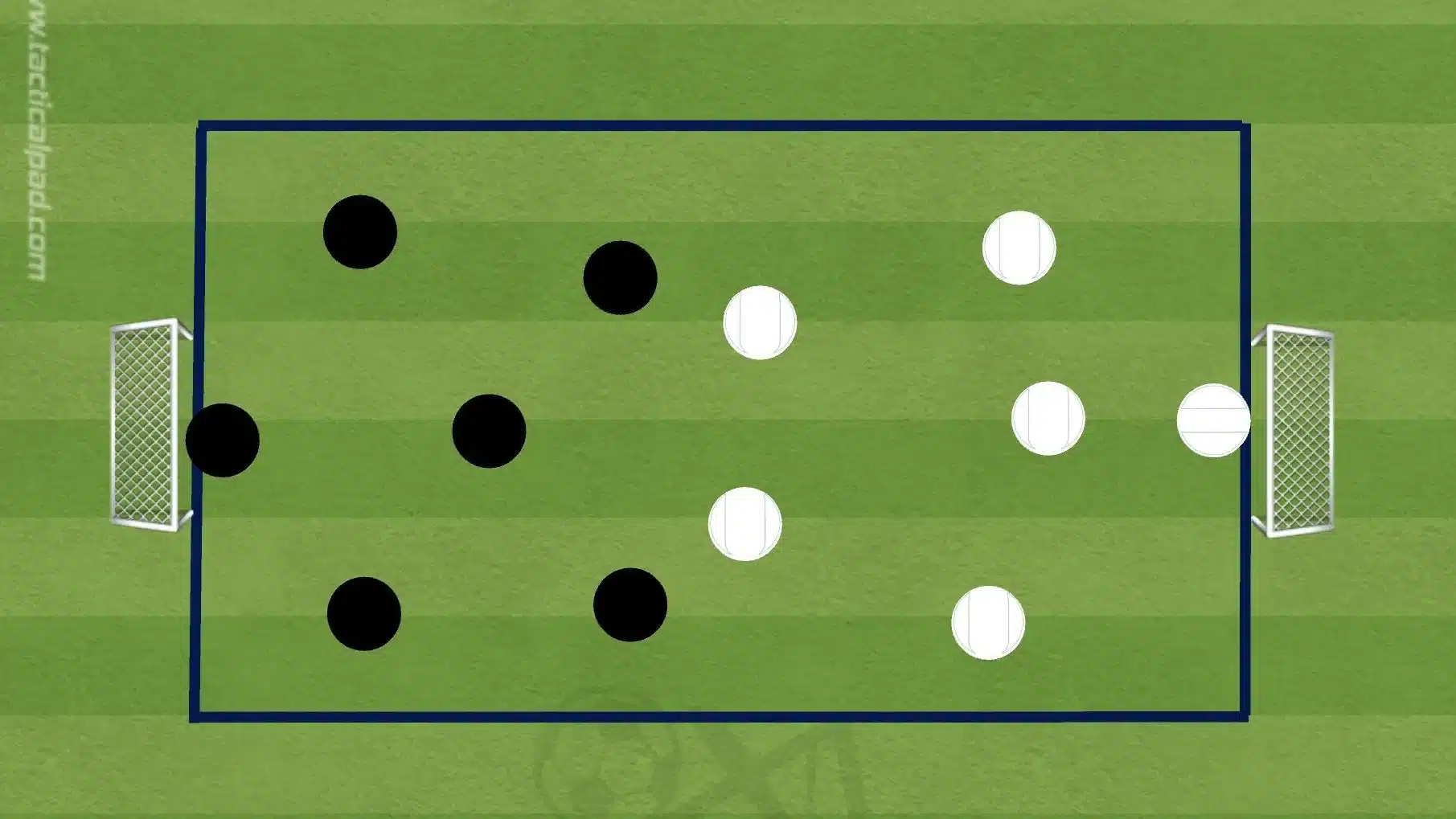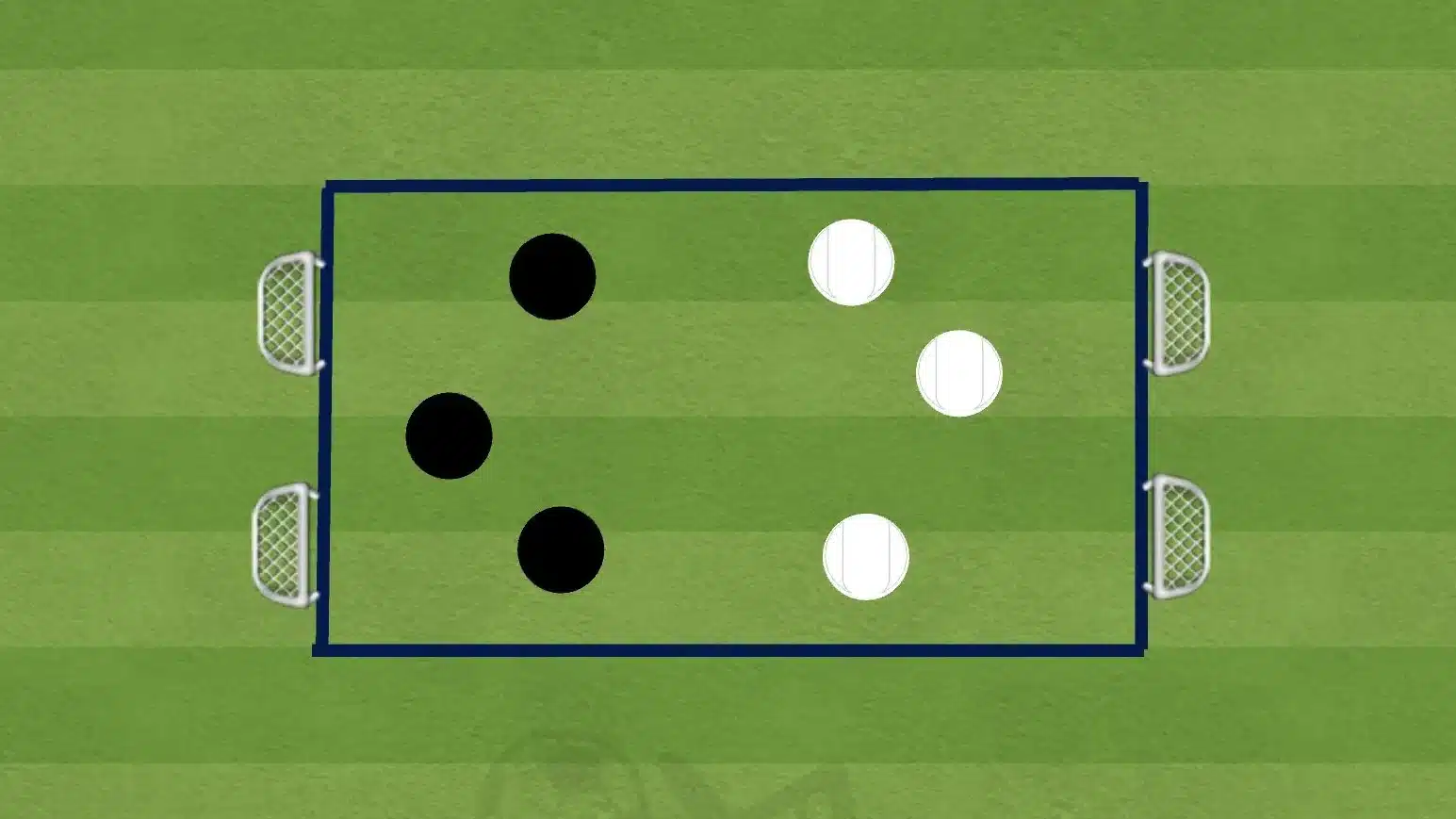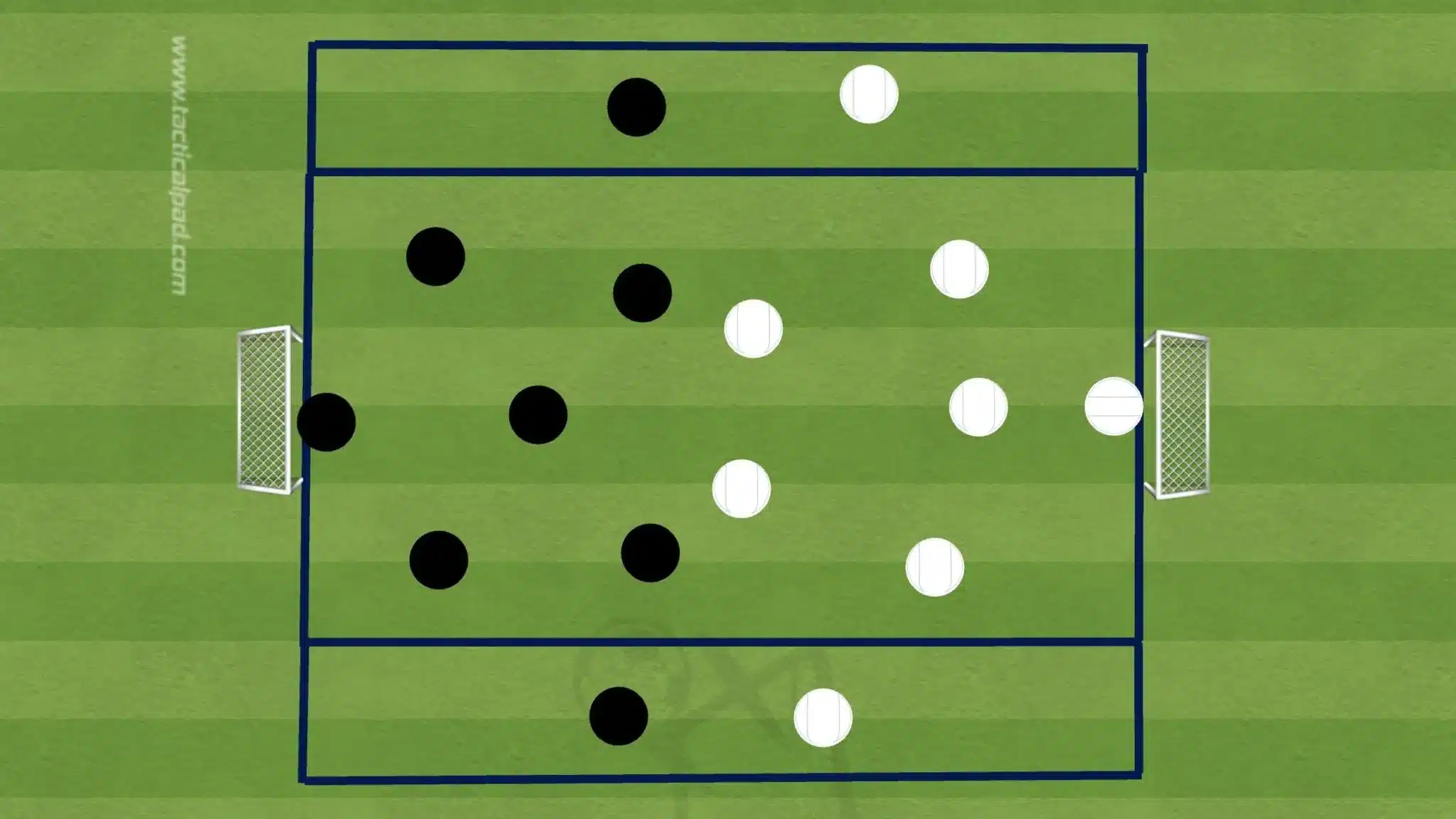Small-sided games (SSGs) are one of the most effective tools for developing football players. By reducing the number of players and playing in smaller spaces, SSGs naturally increase the intensity of play while forcing players to make faster and better decisions. This article explores how small-sided games improve decision-making and intensity, providing key insights and practical applications for coaches and players.
What Are Small-Sided Games?
Small-sided games are modified versions of full-sided football matches with fewer players per team (e.g., 3v3, 5v5, or 7v7) on a smaller pitch. These games are designed to replicate match situations while increasing player involvement, technical repetitions, and tactical awareness.
SSGs can be tailored to specific training objectives, such as improving passing, pressing, or finishing. Coaches can also adjust the rules, pitch size, or touch limits to emphasize certain aspects of play.
Examples of Effective Small-Sided Games
1. 5v5 High-Pressing Game
- Objective: Improve pressing intensity and transitions.
- Setup: Play on a small pitch with two teams of five(not including the goalkeepers). When a team loses possession, they must immediately press to win the ball back. If the defending team regains possession within five seconds, they earn an extra point.
- Focus: This drill improves defensive reactions, counter-pressing, and playing under pressure. Players develop a habit of pressing aggressively and recovering quickly after losing the ball. It also enhances decision-making under pressure, as players must find solutions against intense defensive pressure.

2. 3v3 to Two Mini Goals
- Objective: Improve finishing, quick attacking play, and defensive compactness.
- Setup: A small pitch with two mini-goals on each end, played in a 3v3 format. There are no goalkeepers, so players must find creative ways to finish past defenders.
- Focus: This game improves attacking decision-making, as players must recognize the right moment to shoot or pass. It also sharpens defensive positioning since defenders must cover space effectively and react quickly to transitions. The small-sided nature ensures a high-intensity environment, making it an ideal drill for developing attacking and defensive instincts.

3. 7v7 with Wide Channels
- Objective: Encourage width, crossing play, and decision-making in the final third.
- Setup: A standard 7v7 game with an additional rule: wide channels are accessible only to designated wingers or fullbacks. These players can’t be challenged in the wide areas, allowing them to deliver crosses without immediate defensive pressure.
- Focus: This setup emphasizes attacking width and forces players to recognize when to switch play or exploit wide areas. It also teaches attackers how to time their runs into the box, improving their movement when receiving crosses. Defenders must adjust their positioning based on incoming crosses, helping them develop better defensive habits. The game structure encourages decision-making about when to cross, cut inside, or recycle possession.

How Small-Sided Games Improve Decision-Making
1. More Touches, More Decisions
In traditional 11v11 games, players often go long periods without touching the ball. In SSGs, each player gets more touches per minute, meaning they must constantly assess their surroundings, decide their next action, and execute it under pressure.
2. Faster Speed of Play
With less space and fewer players, SSGs demand quicker decision-making. Players must react to defensive pressure, identify passing options, and adjust their positioning in a fraction of the time compared to a full-sized match.
3. Enhanced Tactical Awareness
Small-sided games expose players to tactical situations more frequently. For example, a 4v4 game emphasizes quick combinations, spacing, and defensive transitions, forcing players to read the game better and make smarter choices.
4. Problem-Solving Under Pressure
SSGs create game-like scenarios where players must solve problems dynamically—whether it’s finding space against a pressing opponent or making split-second decisions in front of goal.
How Small-Sided Games Increase Intensity
1. Higher Physical Demand
With fewer players, there’s no hiding. Players are constantly involved, whether attacking, defending, or transitioning. This naturally increases heart rate, sprint frequency, and overall workload.
2. More Duels and Defensive Actions
Smaller spaces mean players engage in more 1v1 duels, tackles, and defensive recoveries. This improves their ability to press, cover, and regain possession quickly.
3. Improved Pressing and Transition Play
Because the pitch is smaller, counter-pressing and quick transitions become more effective. Players learn to react immediately after losing the ball and apply pressure, which is a key trait in high-intensity football.
4. Increased Mental Focus
With constant action and fewer teammates to rely on, players stay mentally engaged throughout the session. This focus is crucial for replicating the demands of a high-tempo match.
Conclusion: Why Small-Sided Games Are Essential
Small-sided games are a crucial tool for developing modern footballers. They enhance decision-making by increasing the frequency of technical and tactical actions while improving intensity through constant involvement. By incorporating well-designed SSGs into training, coaches can create game-like scenarios that accelerate player development and prepare them for high-level football.
Want more football drills and tactical insights? Explore our Football Drills section for more game-based training ideas!
